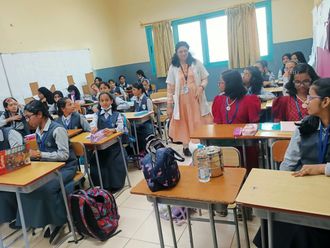
It’s 8.30pm and MBA student Bart Shane returns from his Business School. It is just like any other day… or is it?
He comes home and opens up his laptop. On the advanced learning platform of his laptop his lessons for the day are streaming with videos, quizzes and interactive exercises. He listens to the session on his wireless headset and takes notes on his digital tablet, answers a quiz and goes to sleep. The next morning, he enters his classroom — which is actually a computer simulation laboratory — where he enters his password, and a gamified assignment pops up on his console along with live pictures of his team from different parts of the world. He works on the simulated assignment with his virtual team where they collaborate, co-create and contribute to solve the world’s most pressing problems. Welcome to the 21st century higher education landscape, where the old-world classroom pedagogy is replaced with such radical revolutions, culminating in the concept of Flipped Classrooms.
Like other fields, business education is also going through a metamorphosis. While conventional business education is about an expert professor who shares his knowledge and expertise in a given field, 21st-century education is about keeping knowledge as a foundation and building critical life skills and global intelligence to prepare leaders and decision-makers for the 21st century.
With digital and mobile technology disrupting traditional classroom learning with 30 trillion links and two billion users, students will be connected to a networked world that not only shares information but stimulates curiosity and thinking. With lifelong learning becoming a necessity, such game-changing revolutions are becoming mandatory, with a number of advances already leading this revolution. MOOCS, also known as massive online open courseware, has been able to reach millions of learners, albeit through the conventional lecture mode.
Today there are other technologies that could revolutionise the higher education sector, such as augmented reality, where students will be able to access virtual scenarios reflecting live experiences and can practise to make critical decisions; 3D printing, where 3D models will be printed for teaching and research; and crowdsourcing. What we are witnessing is also a shift from IT as a platform for curriculum delivery to virtual timing becoming the heart of learning and development. In fields such as biology, life sciences and zoology, advanced censor technologies will be able to collect complex data about the environment and this would have huge implications on research. All the above trends will convert conventional learners into engaged participants who will collaborate, cooperate and contribute to the future of our planet.
— The author is Head — Dubai Campus, Senior VP — Institutional Development, and Professor of Leadership and Organisational Behaviour at S P Jain School of Global Management










